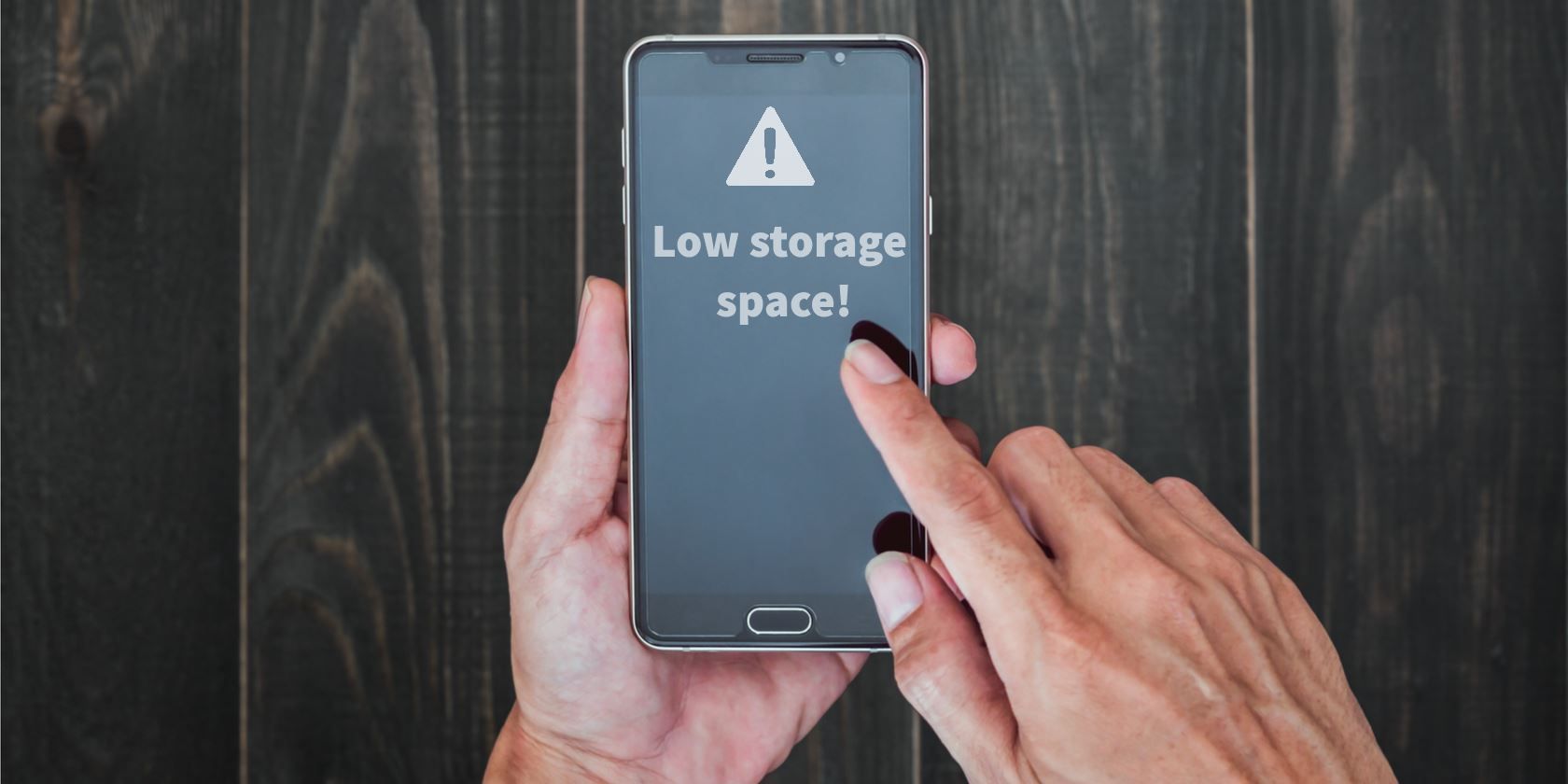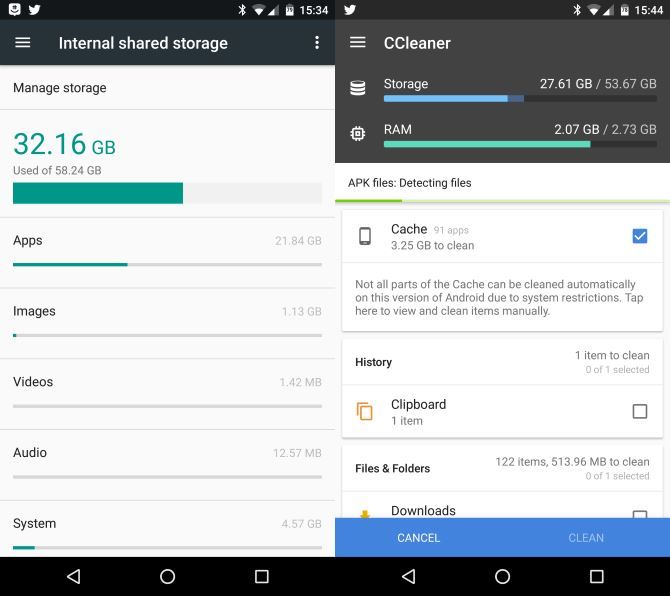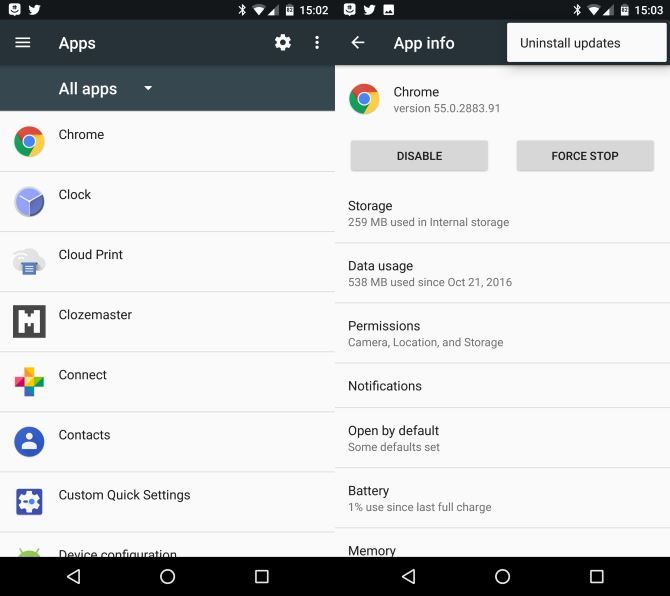If you have a phone with a tiny amount of internal storage, you're probably used to seeing "low storage space" errors. You probably can't install any new apps, which is really frustrating.
What do you do when your free space is measured in megabytes? Besides wishing for an excuse to get a new phone, there are a few tricks you can use.
The Problem is a Severe Lack of Internal Storage
Depending on how old your phone is, you might have more or less of an emergency in the storage department. Most phones from the last few years probably have 16GB or just 8GB of internal space to work with.
If you're on an ancient phone, though, that number might be closer to just one or two gigabytes. The operating system itself takes up some space, and there's always manufacturer bloatware hogging up your precious storage.
Multiple factors contribute to this problem. Even phones that have slots for a microSD card can't fully utilize it for apps, since many apps only move a small portion of their install size to the card.
Additionally, app install sizes are always getting larger, meaning that the 8GB that was spacious in 2013 is next to nothing now. Because you also need some free space for your phone to run efficiently, you run a never-ending cycle of storage space management.
Rooting Could Be an Option
Android allows you more control over pre-installed apps than it once did. Many apps are installed on the system partition, meaning that you can't just uninstall them like apps you've downloaded. Instead, Android lets you disable them, but this only prevents them from running. Disabled apps still take up space.
You could always install an app that lets you see what's taking up the most space (such as DiskUsage), but if you don't have enough space, then you can't even install those apps. Plus, they'll probably just tell you what you already know.
Rooting your phone gives you access to powerful apps that you can't install otherwise, which can give you access to apps that let you uninstall system apps. If you're okay with rooting, installing a custom ROM is one of the best ways to make better use of your available space. There are several tiny ROMs available meant to run on older devices, such as SlimRoms.
There are plenty of reasons to root, but it might prove too difficult for the average user -- so read on for some more non-root options.
Do Not Use the Facebook App
We've discussed at length how awful the Facebook app for Android is. It bogs down your device, requires a ton of permissions, and wastes battery. Chances are if you're struggling with storage space, you can't even download it, but in case you're low on space and still using it, get rid of Facebook and Messenger now.
Take Advantage of Google Photos
Photos take up a lot of space, depending on how powerful your device's camera is. Don't let your pictures waste internal storage — check out Google Photos, which will automatically sync your pictures to the cloud. It even includes a feature that lets you instantly remove photos that are already backed up on Photos. If Photos won't install for you, try an alternative auto-uploading app.
Use the Smallest Version of All Apps
Just because you have a limited amount of space doesn't mean you have to sacrifice on great apps. We've covered awesome apps under 10 MB that still pack plenty of features. You'll find an alternative to Facebook, as well as powerful SMS, calendar, and weather apps.
Also, using an app like Files To SD Card will let you know quickly if an app you've installed can move to the SD card.
Revert Back to Original Releases of Stock Apps
In the app menu, Android allows you to revert pre-installed apps back to their original form. For apps like Chrome that have become huge over the years, this could mean 100 MBor more in difference. To revert an app, go to Settings > Apps and choose the app in question. On its info page, tap the three-dot menu in the upper-right, and choose Uninstall Updates. This will remove all updates and send the app back to its stock state, hopefully downsizing it in the process.
If you really want to go far, you can try ditching Google on your Android. This involves some work to remove Google Play Services, and we wouldn't recommend it for everyone because Play Services keeps your phone updated even if it's not seeing full system updates. However, it is a useful way of getting rid of unwanted apps.
Keep Uninstalled Apps on Your SD Card
It's one thing to install your apps on the SD card, but since they often leave a footprint on the internal storage, it isn't always possible to leave them installed. If you rooted your phone and use an app like Titanium Backup, you can backup the apps you install to SD, delete them when you need space, and re-install them when you need to use them.
What follows is a merry-go-round of installing apps, using them for a while, then deleting them so that you can use other ones. But just knowing they are on the SD card, ready and waiting, means that you can install them without needing internet access.
Get Advanced With Link2SD
If you've rooted your phone and understand what you're doing, you could try using Link2SD to create symbolic links to your SD card. Essentially, you're tricking your phone into thinking apps are still installed internally when they're actually on the SD card. This means you can even get widgets to work on apps that are installed on your SD card. We recommend this only for advanced users.
You Should Save for a New Phone
Despite all this, these are only temporary fixes to a major problem. Apps keep getting bigger, and eventually your phone won't be able to keep up at all. If you're suffering from a lack of internal storage, you won't ever see modern versions of Android on your phone. We recommend saving your money for a new phone as soon as you can, because using your current one will just make you miserable.
You don't have to purchase a fancy flagship phone, either — plenty of amazing phones are available for just a few hundred dollars.
If you need more help surviving on your internal memory, check out the guide to freeing up space on your Android.
We'd love to hear your internal storage woes down in the comments. How much storage are you trying to survive on?
Image Credit: Kidsada Manchinda via Shutterstock.com
Originally written by Angela Randall on August 28th, 2013.



